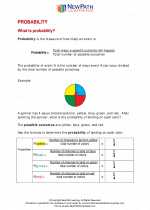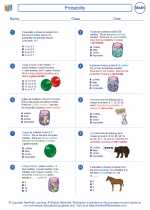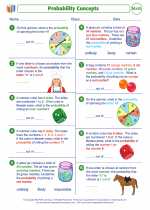Surface Area
Surface area is the measurement of the total area that the surface of a three-dimensional object occupies. In other words, it is the sum of all the areas of the faces, or surfaces, of the object.
Formulas for Calculating Surface Area
Here are the formulas for calculating the surface area of some common three-dimensional shapes:
Cube
For a cube with side length s, the surface area (A) is given by:
A = 6s2
Rectangular Prism
For a rectangular prism with length l, width w, and height h, the surface area (A) is given by:
A = 2lw + 2lh + 2wh
Sphere
For a sphere with radius r, the surface area (A) is given by:
A = 4πr2
Cylinder
For a cylinder with radius r and height h, the surface area (A) is given by:
A = 2πr(r + h) + 2πr2
Cone
For a cone with radius r and slant height l, the surface area (A) is given by:
A = πr(r + l)
Study Guide
When studying surface area, it's important to understand the following concepts:
- Understanding the concept of surface area and why it is important in real-life applications.
- Memorizing the formulas for calculating surface area of different shapes.
- Practicing applying the formulas to solve problems involving finding the surface area of various objects.
- Understanding how to break down complex shapes into simpler components to calculate their surface area.
- Understanding the units of measurement for surface area (e.g., square units) and how to properly express the final answer with the correct units.
By mastering these concepts and practicing solving problems, you can become proficient in calculating surface area for different three-dimensional objects.
.◂Math Worksheets and Study Guides Fifth Grade. Probability

 Worksheet/Answer key
Worksheet/Answer key
 Worksheet/Answer key
Worksheet/Answer key
 Worksheet/Answer key
Worksheet/Answer key
 Worksheet/Answer key
Worksheet/Answer key
